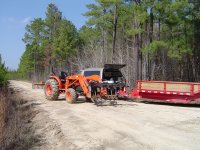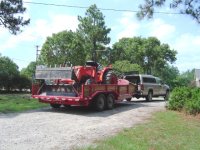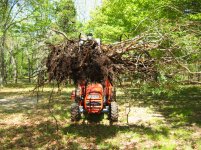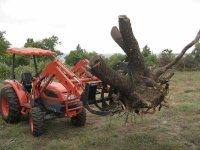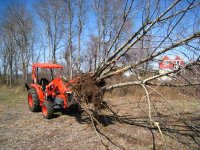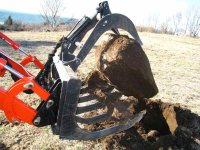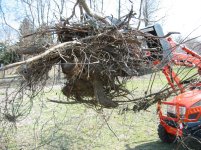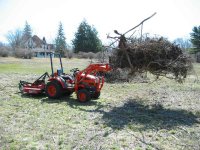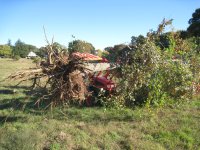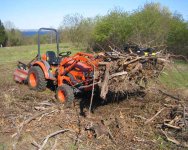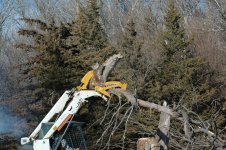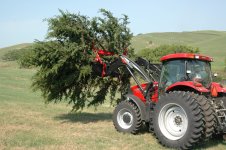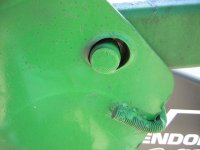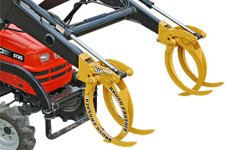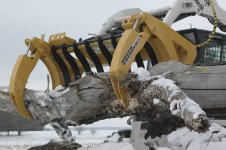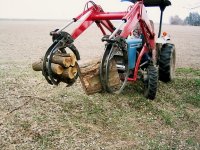SLHawkins
Gold Member
- Joined
- Nov 23, 2007
- Messages
- 435
- Location
- Northern Virginia
- Tractor
- John Deere 5403, International Harvester 584
Yes, Hawk...I have a 4in1 and also a root grapple...both made by WRLong. I also have the WRLong electric over hyd valve. It's a great setup.
Redbug,
Yes, I agree. I have had the same setup on my last 3 tractors. I have been very pleased with my WRLong products and my dealings with them. There's some good folk there at WRLong. When I was in NC, I actually was able to take my tractor up there and let them custom build the 4-in-1 bucket and grapple on site. I had a grey market yanmar at the time and they did not have the loader specs on file. They told me to bring the tractor to them. A week later I had my stuff. They even gave me a tour of the facilities. When I upgraded to my John Deere, I made sure that a WR Long grapple was part of the deal. My next purchase will be a set of pallet forks. I found that with the open bottom grapple, I do not really need a 4-in-1 bucket. Attached are some picturs of the 4-in-1 I had made for my Yanmar FX32 and Root Rake for my Mitsubishi MT4201D. The root rake was the single jaw type. Very good with brush and handling large logs. But, with stumps, small logs, and debris, it was limited. This link is me using the dual jaw open bottoom grapple.
Using WR Long Open Bottom Grapple - YouTube
Hawk
Attachments
-
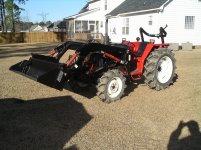 4in1 Closed.jpg730.5 KB · Views: 168
4in1 Closed.jpg730.5 KB · Views: 168 -
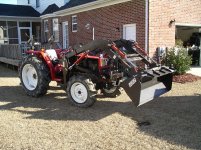 4in1 Dump.jpg901.1 KB · Views: 194
4in1 Dump.jpg901.1 KB · Views: 194 -
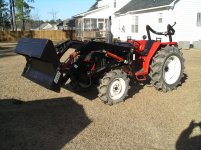 4in1 Open.jpg750.5 KB · Views: 146
4in1 Open.jpg750.5 KB · Views: 146 -
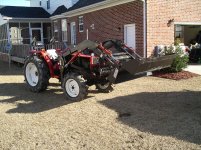 4in1 Tilt.jpg939.4 KB · Views: 190
4in1 Tilt.jpg939.4 KB · Views: 190 -
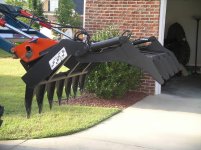 Root Rake004.jpg604.4 KB · Views: 244
Root Rake004.jpg604.4 KB · Views: 244 -
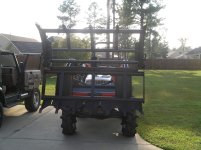 Root Rake003.jpg466.9 KB · Views: 175
Root Rake003.jpg466.9 KB · Views: 175 -
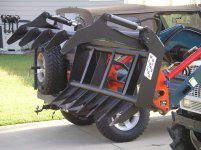 Root Rake002.jpg430.4 KB · Views: 255
Root Rake002.jpg430.4 KB · Views: 255 -
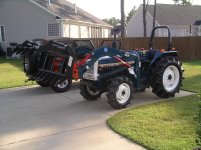 Root Rake001.jpg574.6 KB · Views: 205
Root Rake001.jpg574.6 KB · Views: 205

